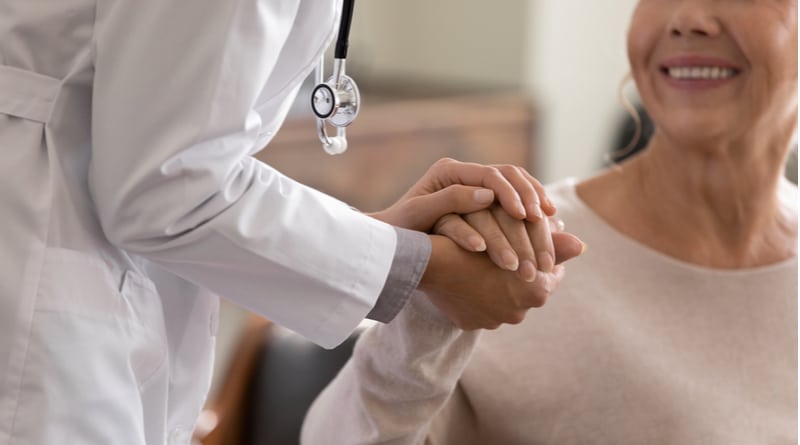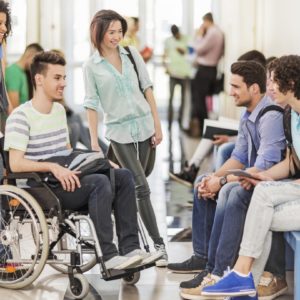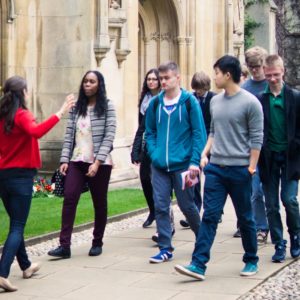What is Older Person Rehabilitation?
Older Person rehabilitation is maintaining and improving the general health and ability of elderly individuals through the therapeutic use of everyday activities or exercise and movement. Rehabilitation of older adults involves an active process, delivered through a coordinated multidisciplinary team approach, that aims to improve function and enable subjects to live their lives to the fullest potential.
Frail, older adults are particularly vulnerable to functional decline as a result of illness, and rehabilitation is an essential part of medical care for this population.
What 3rd level courses are available?
Universities and colleges in Ireland are offering Older Person Rehabilitation courses in the following subject areas:
- Healthcare Support / Caring For the Elderly – The study of how to work competently, safely, and effectively as a Healthcare Assistant in a variety of settings such as nursing homes, hospitals, and home help support.
- QQI Level 5 Care Of the Elderly Module – Understand the provision of care for older people and satisfy the needs of older people in a variety of care settings.
- QQI Care Skills and Care of the Elderly Course – Gain the skills, knowledge, and competence required to work under supervision and independently in a range of Healthcare settings.
- Amputee & Prosthetic Rehabilitation – Gain a solid understanding and skills in the rehabilitation of patients with amputations and prostheses, with a focus on older people.
- Occupational Therapy Studies – Gain an understanding of the principles and practices of rehabilitation, treatment of injured, ill, or disabled patients through the therapeutic use of everyday activities.
- Certificate in Occupational Therapy Essentials – A study of working with people struggling with different challenges and disabilities and how to help them to improve their lives.
- Occupational First Aid – A study of First Aid, patient assessment, respiratory emergencies, cardiac first response, wounds, and bleeding and altered levels of consciousness.
Studying Older Person Rehabilitation in college
There are many Older Person Rehabilitation courses that take place over 1 year to 4 years depending on the course and modules selected. There are also part-time courses and night courses available so you can be sure to fit in your studies no matter what your schedule is like.
Courses will cover theory work through lectures, assignments, tutorials, and taught modules. Assessments will take place continuously with written examinations and practical assignments combined to achieve a qualification. You could also consider work experience in supportive roles within the private, voluntary, or local authority sectors to broaden your key skills and career opportunities. It’s also useful to get some voluntary experience in a health or care setting to show your interest in the area.
You can find work or volunteer experience opportunities in hospitals, physiotherapy or occupational therapy practices, sports clinics, football clubs, special schools, and nursing homes.
Work Experience will not only allow you to obtain a deeper knowledge and understanding of the industry, but it will also give you a chance to do some essential networking with other industry professionals and gain valuable contacts for the future
Career options
After completing a course in Older Person Rehabilitation you will be able to get started in a career that uses specific knowledge of rehabilitation practices such as physiotherapy and occupational therapy.
A career in rehabilitation could include working across a range of acute clinical areas such as medicine, orthopedics, surgery, stroke, or cardiac. However, it’s also possible to go straight into your chosen specialism, for example, burns and plastic surgery, mental health, or stroke rehabilitation.
The work may be physically demanding, with busy caseloads. Although patients’ problems may be complex, rehabilitation therapy is a very rewarding job. You will be working with a range of people who will all have different requirements and you will need to understand each client’s lifestyle so that you can create the best treatment plan for them.
Working hours will depend on whether you are employed by a facility with set business hours or if you are contracted to various facilities or companies. The hours are usually full-time and may include evenings, nights, and weekends. If you have a position in a care home or full-time facility you are likely to work at the weekend. Alternatively, you may choose to work in private practice and then progress to open your practice and become self-employed.
Rehabilitation therapists working in the community may need to visit patients in their own homes. You may have to travel between appointments if working in the community. There may be opportunities to work abroad to further your experience. Do your research and check whether registration is in operation in the country you want to work in.
Related jobs include:
- Occupational Therapist
- Physiotherapist
- Sports therapist
- Chiropractor
- Exercise physiologist
- Health service manager
- Health improvement practitioner
- Osteopath
- Personal trainer
Further study
After completing a course in Older Person Rehabilitation you may choose to pursue further study in a specialist field to increase your knowledge base and skillset. Postgraduate study can also be used as a means to change career focus or to gain professional qualifications required to practice in certain career areas such as sports and exercise, rehabilitation, neurorehabilitation, pediatric and neuromusculoskeletal physiotherapy.
FAQ
What are the most common rehabilitation needs for older adults?
The most common situations that may land seniors in long-term care or rehabilitation:
· Strokes are the leading cause of long-term disability, with more than 795,000 people suffering strokes annually. Depending on their severity, strokes can cause slurred speech, impaired movement, and paralysis. After suffering a stroke, most patients go through physical therapy or nursing care to regain strength and re-integrate into their normal lives.
· Balance problems affect 75% of older adults ages 70 plus. While these vary in severity, they can be crippling and can lead to ongoing problems with strength and stability. When balance problems reach an unstable level, physical therapy is often required to help the senior fix muscle weakness and joint stiffness, and regain the strength needed to live independently or semi-independently.
· Falls are very common among people ages 65 and older. Falls can cause injury and have a heavy impact on quality of life. Broken hips, chronic pain, and disability are all potential side effects of falls and can make it difficult for a senior to maintain independence without physical therapy or nursing care.
What can older people do to try and avoid injuries and keep healthy?
While not all conditions are avoidable, these tips can help older people stay healthy and speed up healing throughout the golden years:
· Stay active. The more active a senior stays, the lower the risk of injury. Regular activity keeps the heart and bones healthy and can help ward off balance problems and muscle atrophy.
· See a doctor regularly. It is recommended older adults see a primary care provider regularly. This can help prevent major health incidents and deliver preventative care.
· Eat a healthy diet. A healthy diet is one of the best ways to prevent strokes, heart disease, diabetes, and other conditions that often necessitate rehabilitation.
Where can I study Older Person Rehabilitation?
Explore your options here
Did You Know?
· Only 3.6% of people over 65 years old are in nursing homes. Elderly men are likely to live with a spouse while elderly women are more likely to live alone.
· 4 in 5 older adults will battle at least one chronic condition or illness such as heart disorders, arthritis, or osteoporosis. 50% will battle at least two.
· By age 75, about 1 in 3 men and 1 in 2 women don’t get ANY physical activity.
· Our sleeping patterns can shift as we age, so we get sleepier earlier and wake up earlier.
· Falls are the leading cause of injuries for older people. One study found that about a third of adults over 65 have a fear of falling.












Comments